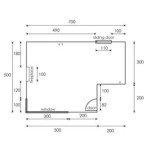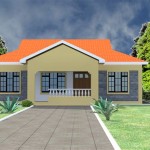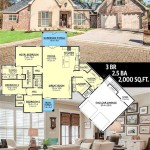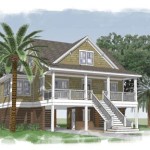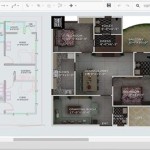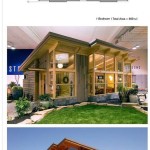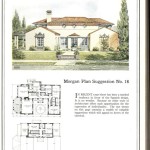Plans For Building A Bluebird House: A Comprehensive Guide
Attracting bluebirds to a yard or property involves providing them with suitable nesting habitats. Constructing a bluebird house according to specific plans contributes significantly to their conservation, especially given the decline in natural nesting cavities. This article outlines the important considerations and provides a detailed guide for building a bluebird house, emphasizing the dimensions, materials, and placement that maximize its attractiveness and safety for bluebirds.
Key Point 1: Understanding Bluebird Nesting Preferences
Bluebirds, belonging to the genus *Sialia*, are cavity-nesting birds, naturally seeking out holes in trees created by woodpeckers or natural decay. However, habitat loss and competition from other cavity-nesting species such as European starlings and house sparrows have reduced the availability of natural nesting sites. Therefore, understanding bluebird preferences is crucial for designing and building a successful bluebird house. Aspects to consider include the entrance hole size, internal dimensions, and the overall construction materials.
Entrance hole size is perhaps the most critical factor. A hole that is too large invites larger, more aggressive birds like starlings, which can evict bluebirds and destroy their nests. The recommended entrance hole size for bluebirds is 1 1/2 inches in diameter. This size effectively excludes starlings while allowing adult bluebirds to enter and exit freely. Smaller holes, such as 1 9/16 inches, can be used but may prevent larger male bluebirds from successfully entering.
Internal dimensions are also important. The floor of the bluebird house should ideally measure around 5x5 inches. This provides sufficient space for the bluebird family without being overly large, which could allow other birds to nest or could make it difficult for the parents to keep the nest warm. The height from the floor to the bottom of the entrance hole should be approximately 6-8 inches. This distance provides a safe depth, preventing predators from easily reaching inside the nest. Overall height to the roof can be anywhere from 9-12 inches.
Material selection plays a significant role in the house's durability and temperature regulation. Untreated wood, such as cedar, redwood, or pine, is preferred. Treated wood can release harmful chemicals, posing a risk to the bluebirds. The wood should be at least ¾ inch thick to provide adequate insulation. Avoid using perches on the exterior of the bluebird house, as these are not used by bluebirds and can actually assist predators. A rough interior surface or horizontal grooves below the entrance hole on the interior of the front panel helps fledglings to climb out of the nest.
Key Point 2: Bluebird House Construction: Step-by-Step Guide
Constructing a bluebird house can be accomplished with relatively basic woodworking skills and tools. The following step-by-step guide details the process:
Materials Required:
- One board of untreated cedar, redwood, or pine (1" x 6" x 6 feet, or equivalent for multiple houses)
- Screws or nails (galvanized or exterior-grade)
- Drill with various drill bits
- Saw (hand saw, circular saw, or jigsaw)
- Measuring tape
- Pencil
- Sandpaper
Cutting the Pieces:
Using the following dimensions, cut the wood pieces. Precise measurements are critical for proper assembly and functionality.
- Front: 6 1/2" wide x 11" long
- Back: 6 1/2" wide x 18" long
- Sides (2): 5" wide x 9 1/2" long (angled cut: 9 1/2" at back to 7" at front)
- Floor: 5" wide x 5" long
- Roof: 7" wide x 9" long
Drilling and Assembly:
- Entrance Hole: Drill a 1 1/2" diameter entrance hole in the front piece. Position the hole 6-8 inches from the bottom of the front piece.
- Drainage Holes: Drill four 1/4" drainage holes in the floor of the house.
- Ventilation Holes: Drill two 1/4" ventilation holes near the top of each side piece.
- Assembly: Assemble the house, starting with the sides. Attach the sides to the floor using screws or nails. Ensure the edges align properly.
- Front and Back: Attach the front and back pieces to the assembled sides and floor. The back piece should extend beyond the top of the sides to allow for mounting to a pole or tree.
- Roof: Attach the roof to the top of the house. Ensure that the roof overhangs the front by at least two inches to provide protection from rain and sun. The roof can be hinged on one side with a latch on the other, or attached with screws, to allow for easy cleaning.
Finishing Touches:
Sand all edges to remove splinters and rough spots. Leave the wood untreated; painting or staining is generally not recommended. If painting is desired, use a light-colored, non-toxic, water-based paint on the exterior only.
Modifications for Specific Needs:
Consider adding a predator guard made of metal flashing around the entrance hole. This deters squirrels and other predators from enlarging the hole to gain access to the nest. A slot-type entrance can also reduce house sparrow access.
Key Point 3: Placement and Maintenance of the Bluebird House
The placement of a bluebird house significantly impacts its success in attracting bluebirds. Proper placement maximizes the chances of attracting bluebirds and minimizes the risk of predation.
Location Considerations:
Place the bluebird house in an open area with short grass. Bluebirds prefer locations where they can easily spot insects to forage for food. Avoid placing the house in heavily wooded areas or areas with dense vegetation, as these locations are less attractive to bluebirds and may attract unwanted predators. Mount the house on a pole or post about 5-6 feet above the ground. This height provides a good balance between accessibility for monitoring and protection from ground predators. Position the entrance hole away from prevailing winds and facing an open area with perches such as trees or shrubs about 50-100 feet away. Bluebirds use these perches to survey the area and watch for predators.
Mounting Techniques:
Mount the bluebird house on a smooth metal pole or post, as this deters climbing predators such as raccoons and snakes. Use a mounting flange or bracket to securely attach the house to the pole. Consider adding a predator baffle below the house to further protect the nest from climbing predators. These baffles can be cone-shaped or cylindrical and should be at least two feet long to be effective. Avoid mounting the bluebird house directly to a tree, as this makes it more accessible to predators. If mounting to a tree is unavoidable, use a predator guard and ensure the tree is not easily climbed by predators.
Maintenance Schedule:
Regular maintenance is essential for maintaining the bluebird house and ensuring its continued suitability for bluebirds. Clean the bluebird house after each nesting season, typically in late summer or early fall. Remove all old nesting material to prevent the buildup of parasites and to encourage bluebirds to use the house again the following year. Monitor the bluebird house regularly during the nesting season. Check for signs of other birds or animals using the house and take appropriate action to deter unwanted species. Repair any damage to the house, such as cracks or loose screws, to maintain its structural integrity. Install a sparrow spooker if house sparrows are using the nests. Sparrow spookers utilize reflective streamers and wires placed above the nest box to deter house sparrows.
Addressing Common Problems:
If house sparrows are using the bluebird house, remove their nests regularly. House sparrows are a significant threat to bluebirds and will often evict them from their nests. Consider using a trap to remove house sparrows from the area, but be sure to identify the birds correctly before taking any action. If predators are a problem, take steps to deter them by adding a predator guard or baffle to the mounting pole. You can also relocate the bluebird house to a safer location.
By following these guidelines for construction, placement, and maintenance one can create a suitable nesting habitat that will encourage bluebirds to thrive in their yard or property and contribute to the conservation of this iconic species.

Bluebird Birdhouse Plans Complete Step By Instructions For Building A Bird House

Free Bluebird House Plans Multiple Designs

Going To Be Building Several Bluebird Nesting Boxes Help Keep The Bugs Out Of My Garden House Plans Bird

Eastern Bluebird Birdhouse 70birds Plans Index

Eastern Bluebird Maryland S Wild Acres

Plans Birdhouse For Bluebirds Grinder Jig Bird House Free Bluebird

Bluebird Birdhouse Plans Complete Step By Instructions For Building A Bird House

Western And Mountain Bluebird Birdhouse 70birds Plans Index

Bluebird Nest Box Plans To Build From Scraps

Creating Bluebird Habitat Free House Plans
Related Posts

